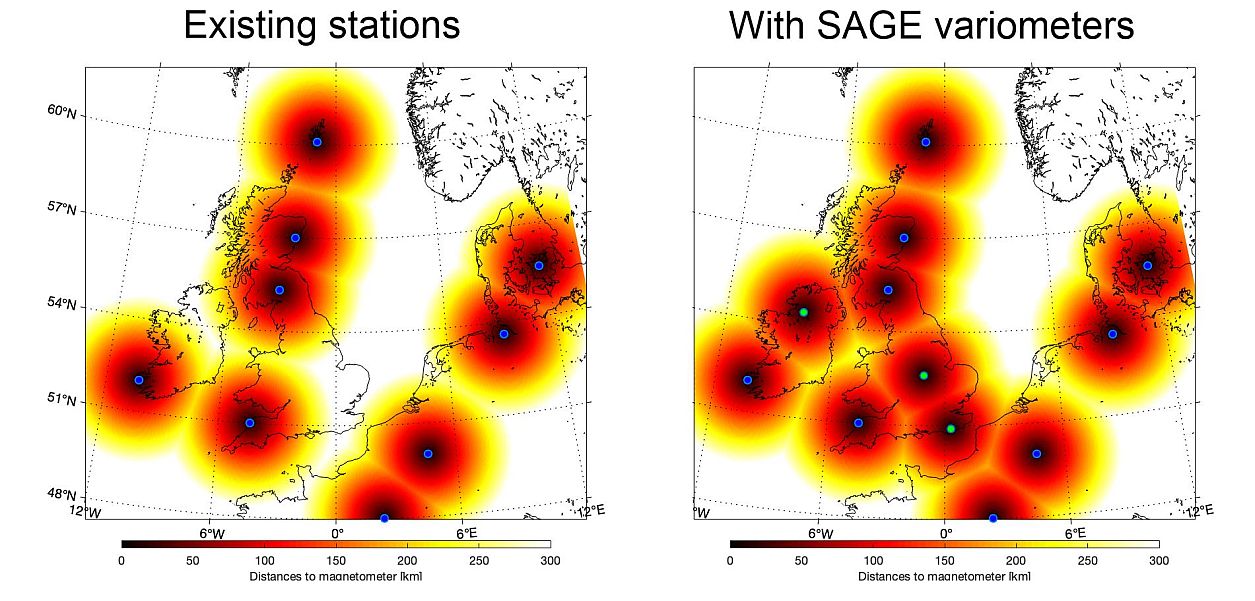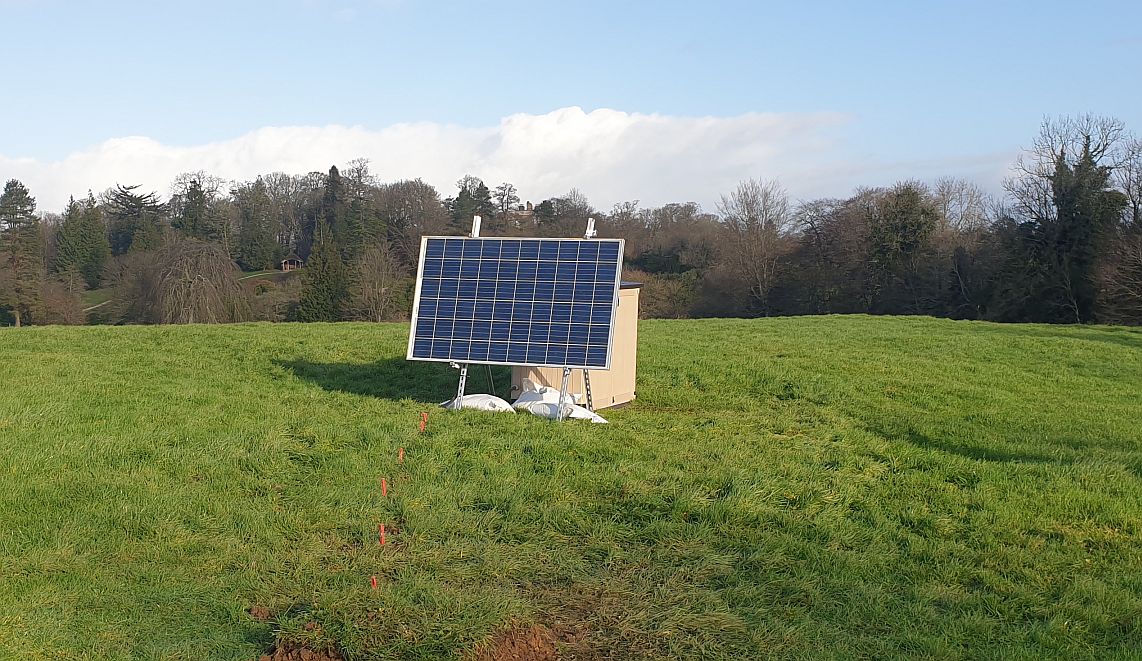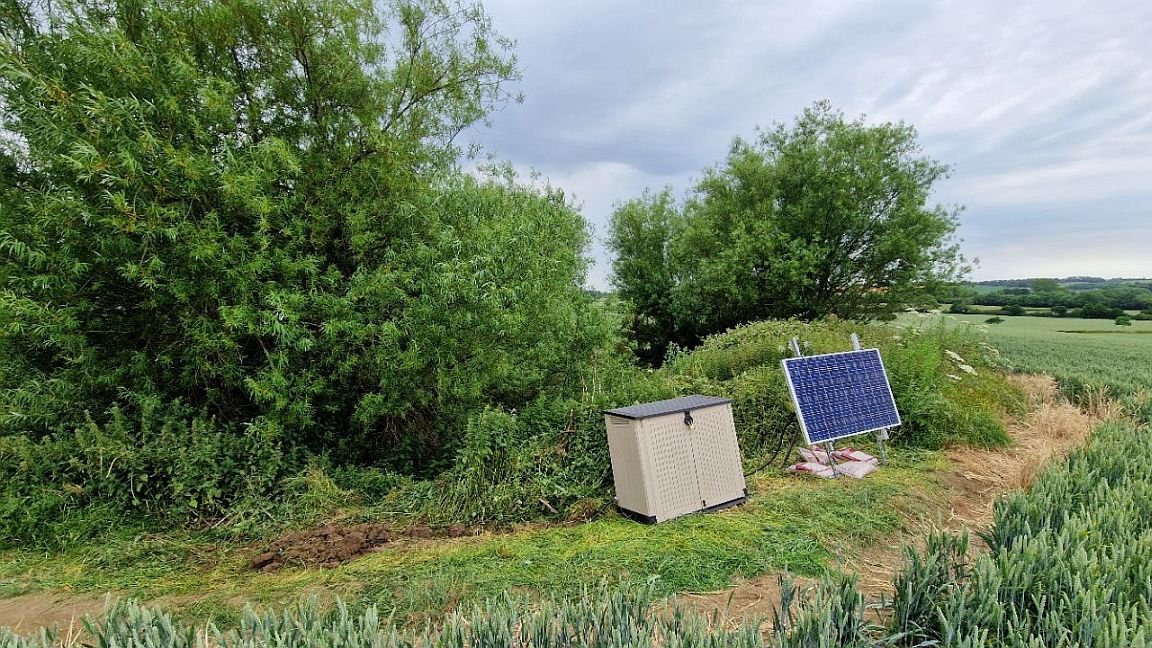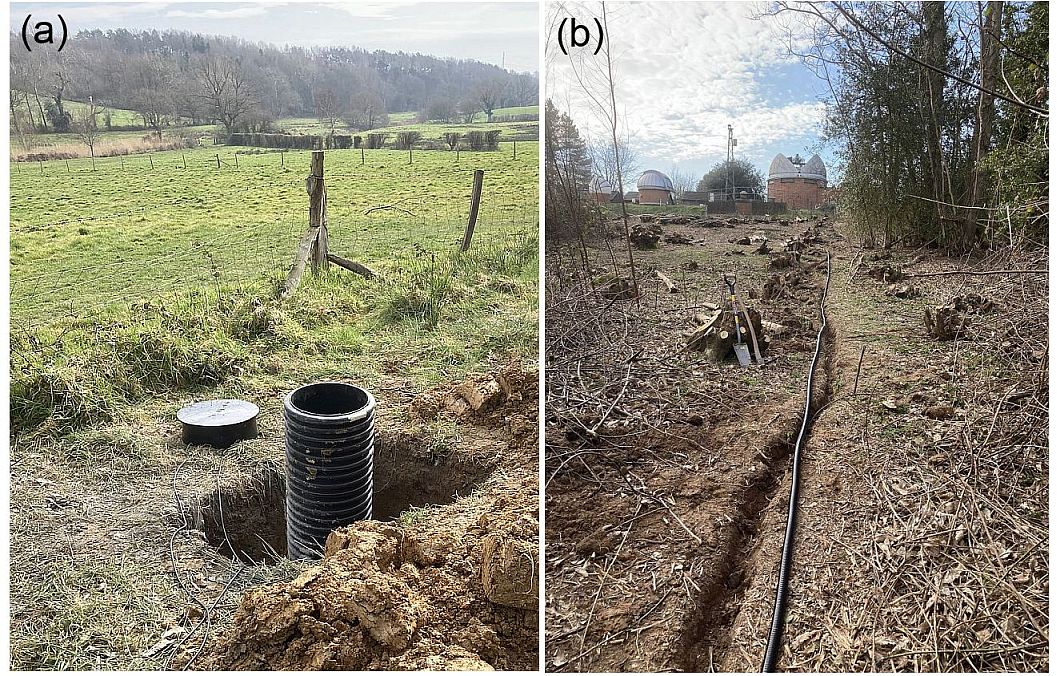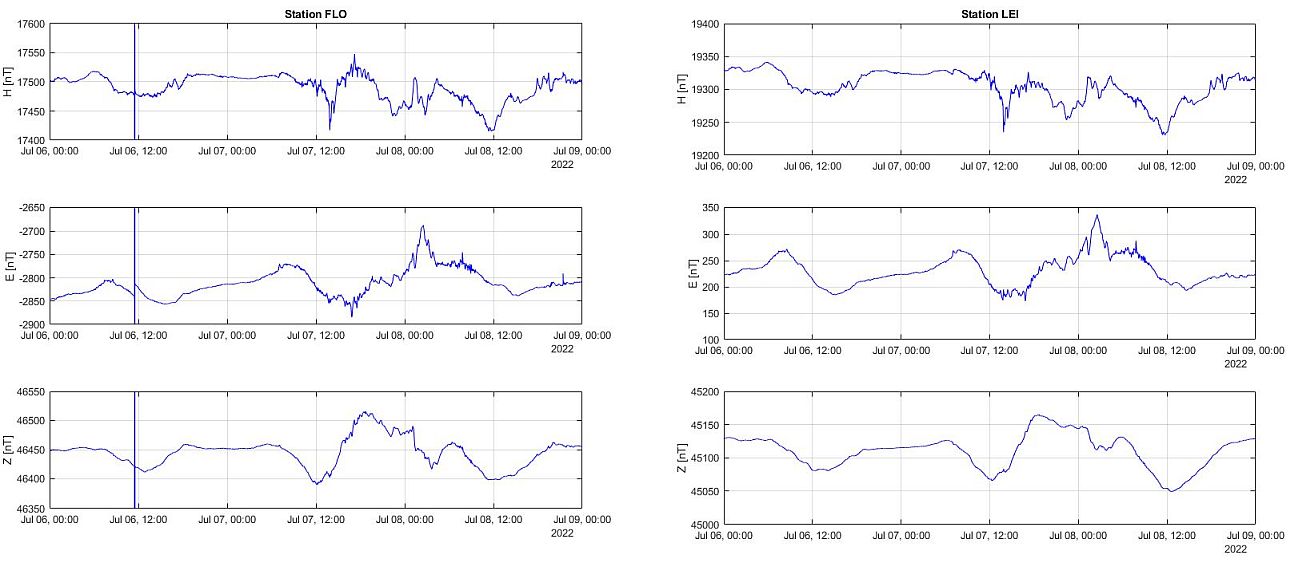SAGE Variometers
In 2022, the SAGE BGS team installed three new variometers to measure magnetic field variation across the UK, filling in the 'gaps' between existing observatories. These cover an east-west line compared to the north-south coverage offered by the existing UK observatories. The new variometers are based on the design of the SWIGS differential magnetometer systems. The new variometers are installed at Florence Court (FLO), Market Harborough (LEI) and Herstmonceux Castle (HTX).
A variometer is an instrument which measures changes in magnetic field over time. Each variometer consists of a Sensys three-component fluxgate magnetomer, buried in a barrel for temperature stability, an EarthData Digitiser/Logger running Linux, 4G modem, control electronics, two car batteries for power and a solar panel to charge the batteries. The electronics and batteries are housed in a small garden bin store to protect them from the weather. The magnetic field is measured once per second, recorded on the logger and sent back to the BGS across the 4G mobile phone network once every five minutes.
The sites are selected to be magnetically quiet. This means being distant from any infrastructure that creates magnetic or electric field noise including at least 150 m from buildings, electric fences, large or moving vehicles and electified railway lines. We check for magnetic cleanliness by running tests with a proton precession magnetometer before a final installation.
With the new sites we will be better able to monitor the location and change of the auroral oval as it moves back and forward across the UK during geomagnetic storms. With the data flowing to us in near real time we can also use it to nowcast where issues from Geomagnetically Induced Currents created by geoelectric fields occur.
FLO: Florence Court, County Fermanagh
This site is the close to the most westerly point in Northern Ireland. Florence Court is a National Trust property located around 15 km south west of Enniskillen. The variometer was installed in February 2022 in one of the fields to the south of the stately home. The field is not open to visitors though is grazed by farm animals during the summer months.
LEI: Market Harborough, Leicestershire
This site sits close to the central point of England and is roughly equidistant from ESK and HAD observatories. The Market Harborough site is located south of Leicester in a field around 400 m from the main road. This site sits on top of a low hill allowing an excellent aspect for the solar panel. It will also remain dry during winter.
HTX: Herstmonceux Castle, Sussex
Herstmonceux is part of the BGS Space Geodesy Facility. The site allows access directly to power and internet communications so does not require a standalone system like FLO or LEI. The magnetometer was buried in a permanent enclosure with buried cabling running back to the main observatory buildings. This site is slightly noisier than the others due to the proximity of the observatory (around 100 m away) and surrounding buildings. However, the trade off is that is easier to run and does not need batteries, a solar panel or 4G modem.
Example measurements
The measurements from the variometers are calibrated using scaling and offset factors determined by comparison to data from the Eskdalemuir observatory. However, as the temperature is not kept constant and the calibration factors are not checked weekly (as they are at observatories), then the magnetic field values are considered to be relative rather than absolute. The variation of the magnetic field is well captured, though for short periods (on the order of hours), which is useful for space weather applications. However, these systems cannot be used for determining the angle of declination for example or long term changes of the Earth's core field.
As an example of data quality, we show the comparison FLO and LEI for a minor storm on the 7/8th July 2022. The figure shows the horizontal intensity in the approximately magnetic North component (H), the intensity in the East component (E) and the variation in the vertical component (Z) for FLO and LEI for a quiet period (midnight on the 6th to midday on the 7th) before a period of minor geomagnetic activity (midday on the 7th to midnight on the 8th). FLO has a large spike before 12:00 which is likely artificial (e.g. someone or something stood on or near the sensor). Both systems have similar patterns over the three days which is very encouraging. They differ in detail though, which is to be expected as they are around 500 km apart.
Live data
Magnetograms showing the magnetic field variations for today and yesterday are available for the three new variometers stations.
With thanks to:
Florence Court: Dave Tyson (NT), Malachy Martin (NT), Josie Parrianen (BGS), Juliane Huebert (BGS); Herstmonceux: Tom Martyn (BGS), Robert Lyon (BGS), Rob Sherwood (BGS); Market Harborough: Mark Newton, Suzie Imber and the staff and students of the Physics Department at University of Leicester; Magnetomer coverage visualisation: inspired by Joan Campanyá (IT Carlow).
Contact
For more information please contact Dr Ciaran Beggan.

- Global Geomagnetic Models
- Space Weather and Geomagnetic Hazard
- High-frequency magnetometers
- Schumann Resonances
- Geoelectric field monitoring
- Space Weather Impact on Ground-based Systems (SWIGS)
- SWIMMR Activities in Ground Effects (SAGE)
- Geomagnetic Virtual Observatories
- Quantum magnetometers for space weather
- Magnetotellurics
- Publications List
